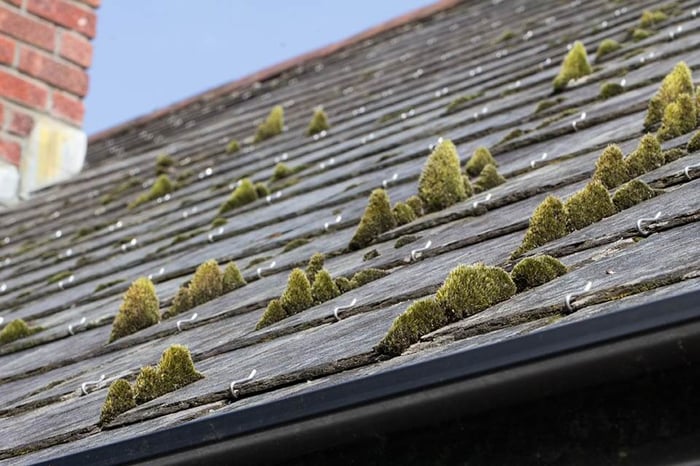What is Soft Washing
Table of Contents
When pressure washers first began gaining popularity in the 1990s, the idea was to up that pressure stream to blast away dirt and grime from houses, roofs, and other structures, often without the use of cleaning chemicals.
As time passed and technology advanced, however, it became obvious that high pressure alone was not only not working, it was actually causing damage, especially by blasting the aggregate off of roof shingles. This is how the idea of “soft washing” emerged.
While some contractors have been using soft washing for 20 years or so, the popularity of the process really began taking off in the early 2000s.
What is Soft Washing?
Soft washing primarily began as a method to safely remove ugly black stains from shingle roofs. Those black stains are actually Gloecaspsa Magma, a type of algae that feeds on the aggregate of shingle roofs, damaging the shingles and potentially decreasing the life of the roof.
Blasting the algae off of roofs with high pressure can cause damage similar to a hail storm, knocking off the aggregate that is designed to protect the shingles from weathering and UV degradation. Instead, the algae needs to be killed by using a chemical compound designed to kill organic matter. The product of choice: sodium hypochlorite, a.k.a. bleach. Soft washing, then, is using a mix of water and bleach to kill organic matter on roofs, siding, and other surfaces. Unlike pressure washing, soft washing uses a gentle, low-pressure spray and lets the bleach do the job. In fact, roof manufacturers have listed the use of soft washing as the proper way to clean a roof. Some insurance companies even require roofs to be cleaned in order to maintain coverage.
While soft washing began primarily as a safe and effective ways to clean roofs, it has since become the method of choice for cleaning and removing organic-based stains from a bariety of surfaces such as siding, wood fences, and any delicate surface that high pressure may damage.
Soft washing not only kills Gloescapsa Magma (algae), it can be used to remove mold, mildew, lichen, moss, fungi, and germs.
What Equipment is Need for Soft Washing?
As the popularity of soft washing has grown, so has the demand for better technology. In the early days, most contractors relied on inexpensive 12-volt sprayers that were not designed for handling harsh chemicals and often did not shoot the soft washing solution very far. Contractors had to walk on roofs and they had to create mixes that were much stronger than they are today due to the low volume produced by these rudimentary pumps, making it easy to kill plants or cause damage from overspray.
These days there are multiple options available on the market, ranging from higher-quality sprayers, such as our ProTool Sprayer, to pressure washers with specialized tips, such as the X-Jet M5, to actual soft washing machines like the ProTool Clever and the awesome Batch Pro from Valley Industries. It really comes down to how much you'll be cleaning, how efficiently you want to clean, and your budget. You can learn more about these options in our article on choosing the right soft washing system for your needs.
What Chemicals Do I Need for Soft Washing?
As already mentioned, the primary chemical of choice for soft washing is commercial-grade 12.5% bleach mixed with water. The problem, however, is that on their own, bleach and water will run right off the surface, wasting tons of chemicals and adding risk to damaging the plants below. This is where a surfactant comes in.
The word "surfactant" refers to a "surface acting agent," defined as "a substance which tends to reduce the surface tension of a liquid in which it is dissolved." Surfactants help make your cleaning mixes stick to the surface, giving them more time to do their job. Our super concentrated Sticky surfactant is just that: super sticky. When using Sticky, your mix clings, allowing for longer dwell time and reducing your chemical cost.
We also recommend using an odor masker, such as Lemony, to help reduce the smell of Chlorine, which some customers do not like. Finally, Post Rinse is a neutralizer that can be applied directly to plants to help prevent damage from you soft wash mix.


